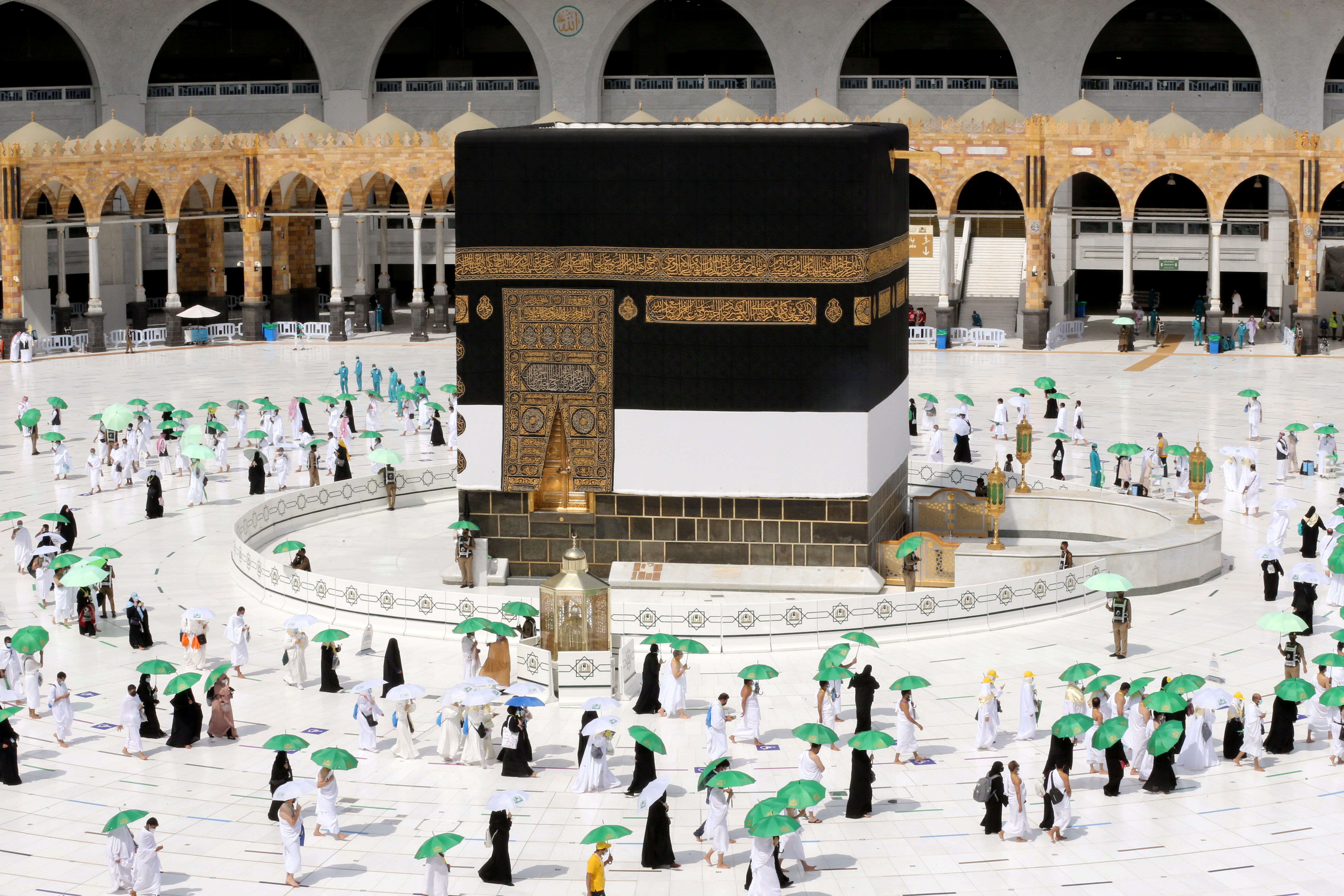Hajj pilgrims face growing heat stroke risks with global warming
The risk of suffering life-threatening heat stroke could rise five-fold with global warming of 1.5C above preindustrial times

Your support helps us to tell the story
From reproductive rights to climate change to Big Tech, The Independent is on the ground when the story is developing. Whether it's investigating the financials of Elon Musk's pro-Trump PAC or producing our latest documentary, 'The A Word', which shines a light on the American women fighting for reproductive rights, we know how important it is to parse out the facts from the messaging.
At such a critical moment in US history, we need reporters on the ground. Your donation allows us to keep sending journalists to speak to both sides of the story.
The Independent is trusted by Americans across the entire political spectrum. And unlike many other quality news outlets, we choose not to lock Americans out of our reporting and analysis with paywalls. We believe quality journalism should be available to everyone, paid for by those who can afford it.
Your support makes all the difference.As thousands of devout Muslims flock to Islam’s holiest sites in Saudi Arabia for the annual Hajj pilgrimage this week, scientists warn the sacred rite is under threat due to deadly rising heat.
The risk of pilgrims suffering life-threatening heat stroke could rise five-fold with global warming of 1.5C above pre-industrial times, found the study in the journal Environmental Research Letters.
With an increase of 2C – the less ambitious goal of the 2015 Paris Agreement – the probability becomes 10 times higher, said Climate Analytics, a Berlin-based think-tank.
“The region is already susceptible to dangerous heat levels. We found that even in the best case scenario, where temperatures only go up by 1.5C, pilgrims would still be under threat,” said Fahad Saeed, lead author of the study.
“It will compromise the very essence of this religion,” Mr Saeed, regional lead scientist for Climate Analytics, told the Thomson Reuters Foundation.
The world has already heated up by about 1.2C and is currently on track for warming of about 3C this century as emissions continue to rise.
The Hajj, a once-in-a-lifetime duty for every able-bodied Muslim who can afford it, involves several outdoor activities, including praying outside and walking from one religious site to another during the day.
The risk of heat stroke stems not just from rising temperatures, but from more humidity – which prevents sweat from evaporating as quickly, making it harder to cool down.
To guard against the coronavirus, only 60,000 pilgrims are visiting the main sites from 17 to 22 July this year, in temperatures of about 36C to 43C.
Climate Analytics found that July, August, September and October will have the deadliest combination of heat and humidity.
This decade, the Hajj - whose dates are earlier each year, following the Islamic lunar calendar – falls fully or partially in July between 2020 and 2023.
The Saudi General Authority of Meteorology and Environmental Protection did not immediately respond to a request for comment.
Saudi authorities are tackling the heat threat, with a 2016 National Hajj Extreme Heat Strategy pledging air conditioning and fans in all indoor places and adequate water, as heat illnesses made up 24 per cent of hospital admissions during 2015’s haj.
After allowing only 1,000 pilgrims to attend last year, the Hajj has expanded this year but only to citizens and residents, aged 18 to 65, who have been fully vaccinated or have recovered from the virus and who do not suffer from chronic diseases.
The Ministry of Health announced it had provided misting fans across religious sites and a nearby hospital would be equipped with a 24-hour heat exhaustion unit.
Limiting numbers to decrease the risk of spreading Covid-19 has also barred those most at risk of heat stroke, while fewer pilgrims mean cooling units can work more effectively.
“There are lower numbers this year but in normal years the Hajj brings 2 million people to a confined place. The risk would be higher,” said Mr Saeed.
The study’s authors said Muslim countries should consider more actively working to curb climate-changing emissions under the Paris Agreement “in order to avoid profound risks for one of the central elements of their faith”.
“Climate action could save this heritage,” Mr Saeed said.
Thomson Reuters Foundation
Join our commenting forum
Join thought-provoking conversations, follow other Independent readers and see their replies
Comments